The sculptures of Hew Locke turn the symbols of state power – from coats of arms to naval vessels, public statues and royal portraits – into tools for examining the ways in which societies the world over have fashioned their identities, often under the shadow of colonialism. Born in Edinburgh in 1950, Locke spent his formative years in Guyana (his father was the celebrated Guyanese artist Donald Locke), before returning to the UK to complete his Master’s at the Royal College of Art, London. Major public commissions include ‘The Jurors’, installed in Runnymede in 2015 to commemorate the 800th anniversary of the sealing of the Magna Carta; a large-scale retrospective toured from Ikon Gallery in Birmingham to two museums in the United States in 2019. At present, Locke’s commission for Tate Britain, ‘The Procession’ – a vast carnivalesque group of more than 100 figures, kitted out in vivid costumes that incorporate everything from images of the Benin bronzes to William Blake’s gruesome depiction of a hanged slave – is on view at the gallery (until 22 January 2023); his work also features as part of ‘In the Black Fantastic’ , a group exhibition at the Hayward Gallery, London, curated by Ekow Eshun (until 18 September).
Where is your studio?
My studio’s in Stockwell. I’m one of those very lucky artists who can walk from home to the studio – it’s about half an hour, door to door.
What do you like most about this space?
The fact that it’s not freezing. In London that’s a big plus. It’s the first studio I’ve ever had that’s been built to modern standards – in a new build high-rise complex, with halls of residence for art students above us.
What frustrates you about it?
There’s always going to be something that ’s problematic. For me, it’s scale – it would be nice if it was a bigger space. But I know I’m very, very lucky – for recent graduates, if they’re thinking of staying in London, it can all be a bit of nightmare.
Do you work alone?
I work with assistants generally, but I also work by myself in there. Often the day starts when the assistants leave – that’s when I make my adjustments and my tweaking. I need time to be in there by myself, working away.
How messy is the studio?
Being a sculptor is quite tricky from a storage point of view. To operate in a practical way you have to have storage, so I have offsite storage units; otherwise it would be chaos. And the studio itself needs to be tidied at the end of every day.
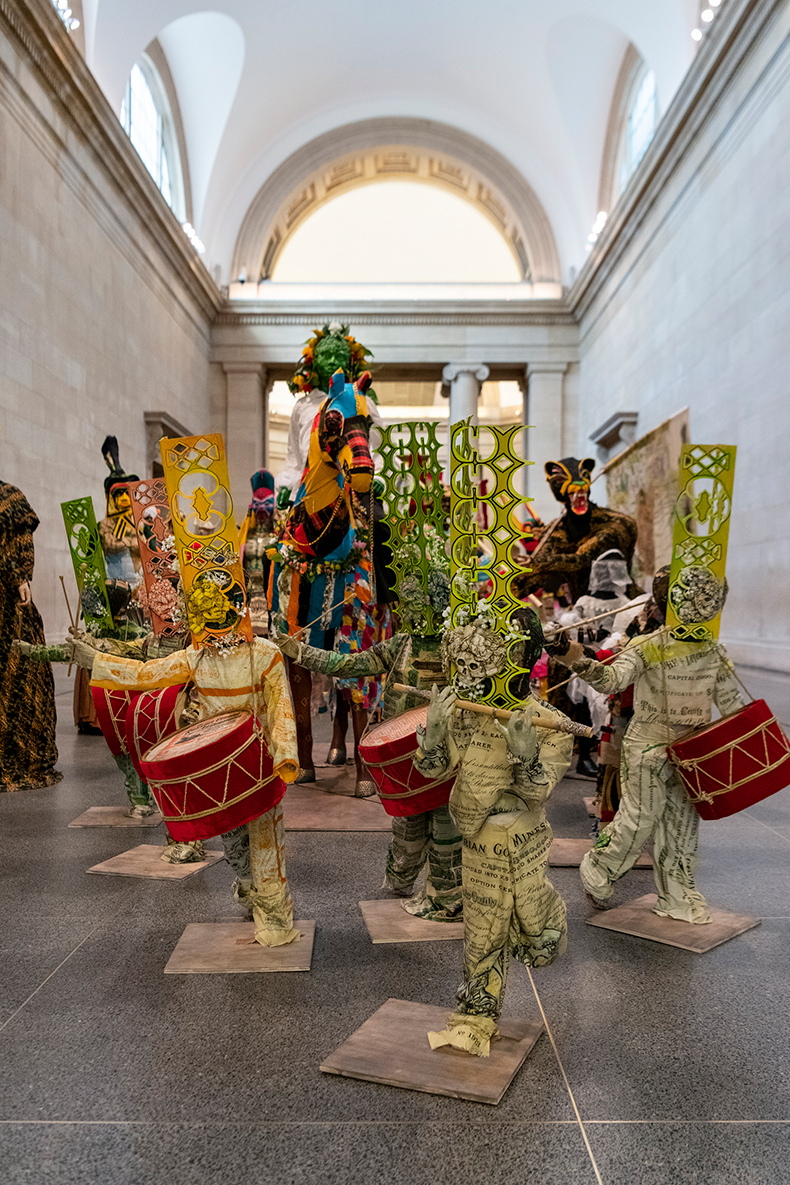
The Procession (2022), Hew Locke, installation view at Tate Britain, London. Photo: © Tate Photography (Joe Humphrys)
Do you keep relics from past projects in the studio – maquettes or models?
No, once a project is done, then it’s all stored somewhere else. My studio is dotted with small model boats – but they are all still waiting to become boat sculptures.
What’s the strangest object that you keep in your studio?
One object I keep that is particularly odd is a penny issued for the colony of Barbados, I think in the 18th century. It’s a beautiful thing. On one side there is an image of a pineapple and on the other side an image of a black man in profile – obviously, at that time, a slave. He’s wearing the three-feathered crown of the Prince of Wales. Underneath him are written the words ‘I serve’ in English, which translates back into the [German] motto of the Prince of Wales. So it’s sort of a joke – planters having a laugh at the expense of the slaves who are serving them. An interesting, but very unpleasant object at the same time.
Have you incorporated this into any of your works?
Yes. Quite often the imagery appears as plaques on boats. And it appears in the Hayward show, in a group of pieces called the Ambassadors. Four Black, equestrian figures, less than half life size, and on the back of one of their jackets is fixed a copy of the Barbados slave penny.
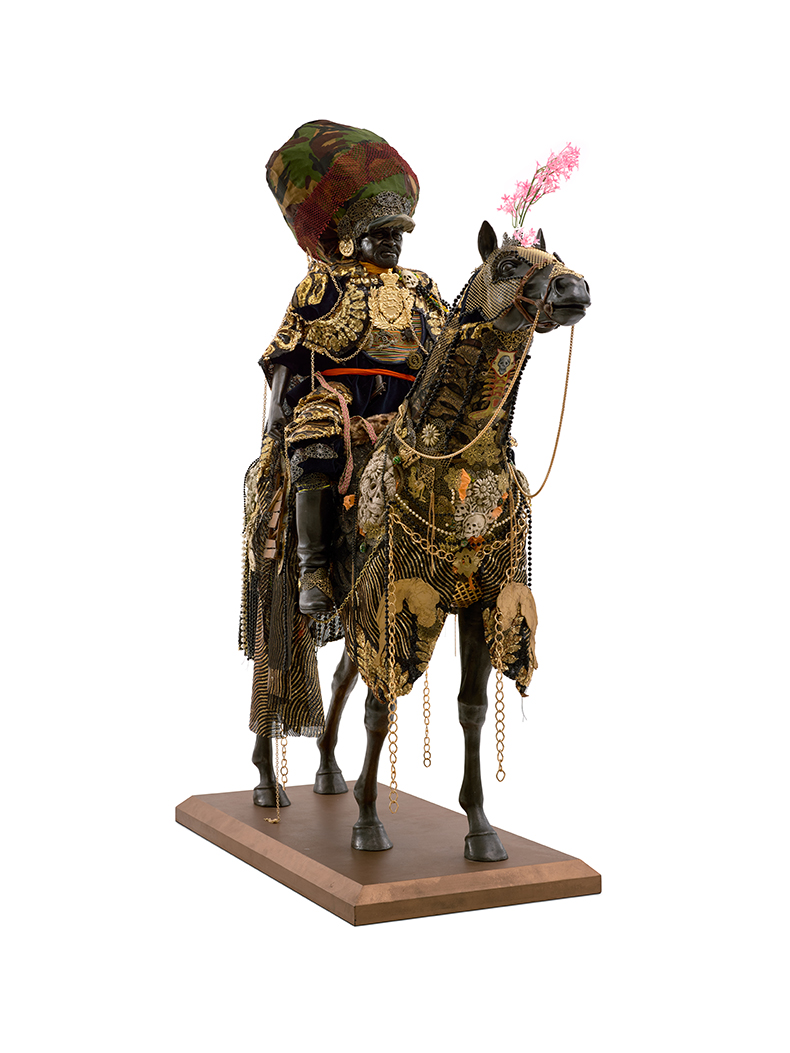
Ambassador 1 (2021), Hew Locke. Photo: Anna Arca; © Hew Locke 2022
Which artistic tool could you least do without?
A cordless drill. Back in the day I’d have said a glue gun. But without a cordless drill, the system collapses.
What’s the most well-thumbed book in your studio?
One of the Dover Books: compilations of out-of-copyright imagery of all sorts of things. There’s a book on hands, a book on arms and armour. They’re usually taken from Victorian illustrations or early 20th century illustrations. Sadly, the company no longer has a physical outlet, but there used to be a Dover Books shop in Covent Garden and I would go there all the time. (Unfortunately, my purchases weren’t enough to keep them going.) Other books I look at all the time include one on Songye carvings from the Democratic Republic of Congo, and a book on miniature paintings from the Jaipur school, which is where I got my colour.
Do you pin up images of other artists work on the walls?
Not very often, no. There are a few things I’ve had up for a while – some cut-out postcards from the V&A of the dresses of Frida Kahlo, and a poster of the Berbice river in Guyana. But not many things to do with other artists – I’m too busy concentrating on my own stuff, and wall space is at quite high a premium.
Do you listen to music while you’re working?
Sometimes – but when I’m by myself it’s audiobooks that basically keep me going, that soothe my mind. At the moment, I’m listening to a series called the Shadows of Men by Abir Mukherjee – I find it quite problematic and messy on the topic of the British Raj in India, but it’s interesting. I’m constantly analysing who the audience for these books is and what it is that I’m being sold.
What do you usually wear while you’re working?
If I’m doing something messy, I wear a pair of bib-and-brace overalls which are covered in paint – when I remember to put them on, that is.
Do you ever do you ever sleep in your studio?
No. That would be illegal. I think I did maybe once, many years ago, when I was living in a squat studio. But all that working through the night stuff – I’m too old for that nonsense, and it doesn’t guarantee you good results.
Is anything or anyone banned?
Bad attitudes. But I don’t really have that problem.
‘Hew Locke: The Procession’ is at Tate Britain, London, until 22 January 2023. ‘In the Black Fantastic’ is at the Hayward Gallery, London, until 18 September.
Unlimited access from just $16 every 3 months
Subscribe to get unlimited and exclusive access to the top art stories, interviews and exhibition reviews.

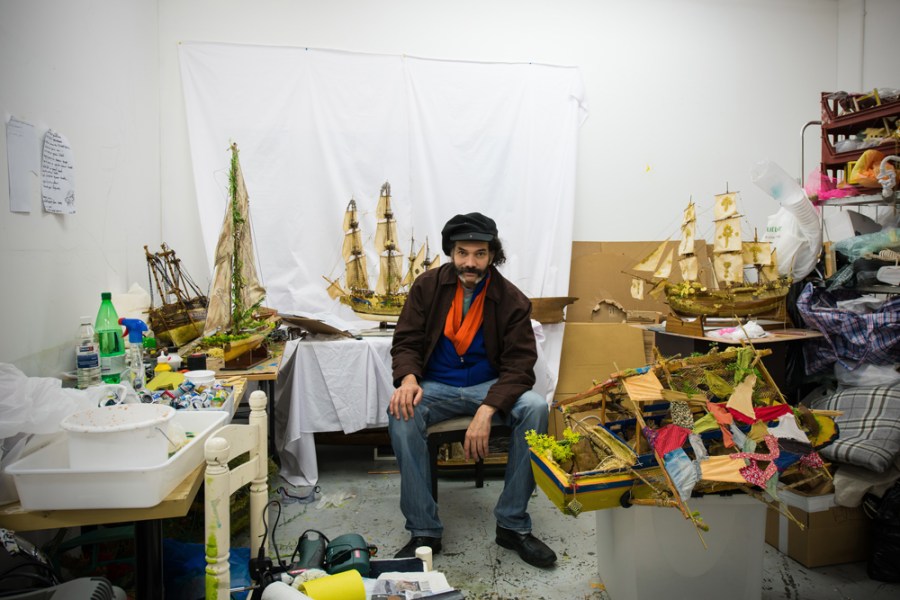
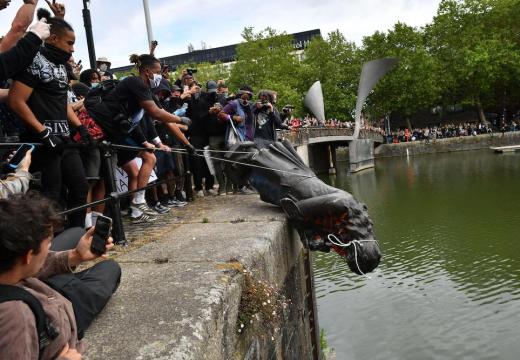
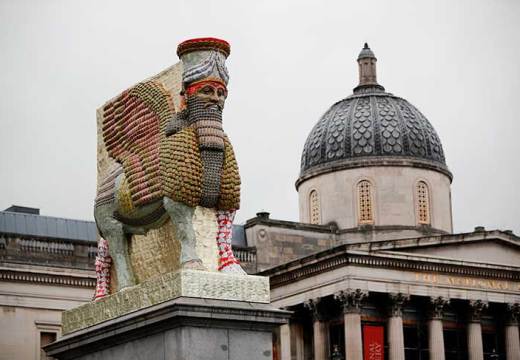
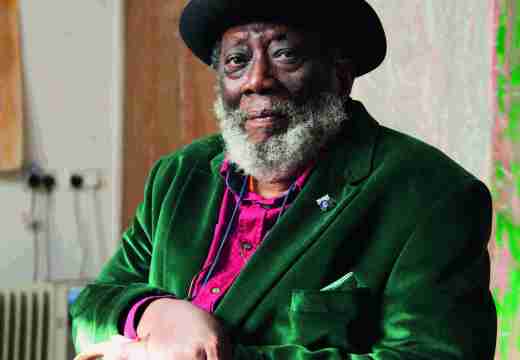









![Masterpiece [Re]discovery 2022. Photo: Ben Fisher Photography, courtesy of Masterpiece London](http://www.apollo-magazine.com/wp-content/uploads/2022/07/MPL2022_4263.jpg)
It’s time for the government of London to return to its rightful home